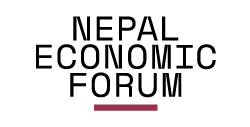Last week, three events took the globe by storm. One was the announcement of an aid freeze by the United States, and the second was the announcement of Deep Seek, an artificial intelligence platform built in China that uses open-source large language models (LLM). The third that received lesser public attention was the visit of the Indian Foreign Secretary to China on India’s Republic Day and signing few agreements. When we do not have any control over these activities, we can only reflect upon how it will impact our lives and move on. Regardless of what happens around us, we Nepalis are known to thrive in chaos for the past centuries, and we will continue to find a way to thrive in the chaos.
Changing the Aid Scenario
In a country, where the best minds choose to work in development agencies over the private sector given better-paying jobs and global mobility, the aid-freeze announcement from the US has impacted many brilliant professionals. The uncertainty looms on what will happen after the ninety-days of the ‘Stop-Work’ period that has suspended activities under USAID jurisdiction. The uncertainties prevailing in terms of possibility of review and resumption or the permanent halt of the activities have been a bigger concern in the development fraternity. In case this is a permanent stop of US aid to the world, then it may also trigger a trend of other countries following the suit. I vividly remember my friend working at Twitter (now X), who was fired unceremoniously a few days before Christmas. It was conveyed to her after contacting Human Resources when her entry card to the office had stopped working. Many people raised this issue on social media calling Twitter a company without a heart and a soul. But then many technology companies followed similar suit. Similarly, announcing suspension of aid programs may become the norm, that is alarming in the development sector.
One of the key issues to watch now will be how the US-based consulting firms that dominate the works around aid and assistance programs will be impacted. Of the overall USD 200 billion market, more than half is dominated by US firms. They employ hundreds and thousands of the people across the world. It will be interesting to see whether these firms will still have a large market share in non-US aid programs. Further, with the US exiting from WHO, Climate Accord and impacting many multilateral basket initiatives, the reaction of these global initiatives towards these US based firms would be worth noting. The latter part of 2025 will see the impact of aid freeze playing out.
Technology and Innovation
Reuters reported on January 25, stating that Deep Seek is threatening to disrupt the technology world orders with its latest AI models. The company claims these models are on par or better than the industry-leading models in the US, but at a fraction of cost. Nvidia, the US company that claims to be “World Leader in Artificial Intelligence Computing” lost USD 600 billion that day. That is like India losing a sixth of its GDP in a single day! However, when we deep-dive, the phenomenon of Chinese Firms disrupting the world order through its technological intervention is nothing new. Tik Tok, a Chinese social media app, forced apps to move to video and build revenue models around it. BYD, an electric battery manufacturer, becomes leader in sales of electric vehicles. In renewable energy, China has been innovating and growing to the extent that their crude oil consumption from high growth is now stagnating. In January 2017 in Davos, as the new administration started to take office in the US, heralding an inward-looking strategy, the Chinese President Xi Jinping stood to project being the defender of globalization. Eight years later, with technological advancement and dominance in many areas, it will be interesting to watch how China walks into the vacuum created by the US on aid and withdrawal from multilateral platforms.
China and India
In my writings, I have always maintained the convergence of the interests of China and India despite the media rhetoric. On Indian Republic Day, the foreign secretary was in China setting the grounds for reconciliation as the two countries celebrated 75 years of diplomatic relations. There would be the resumption of people-to-people movement between the two countries with flights and Kailash Mansarovar pilgrimage resuming. In light of global developments, it is obvious that the two countries to realign. The experimentation of payment in the Chinese Yuan for the purchase of Russian oil amidst global sanctions has been an example of how economic benefits will drive the relationship between two countries. I have also been writing and talking about the potential look out for alternatives to the US dollar as a dominant currency as the US retreads to fix internal challenges. This continues to be the driver of the convergence of Chinese and Indian interests.
For Nepal and other countries that must adjust to global events, it’s about being able to contemplate how to manage through uncertainty. We can look back and see our economic growth and transformation during tumultuous times around the world.
Sujeev is the founder CEO of beed. He leverages over 25 years of experience in diverse fields and geographies to advise, lead and inspire. With comprehensive networks in Nepal’s public, private, civil and diplomatic sectors, Sujeev is a trusted business and policy advisor and respected strategic thinker. From economies of developing countries to economies of human beings, he moves across different worlds, with his passion for the Himalayas being the axis.





